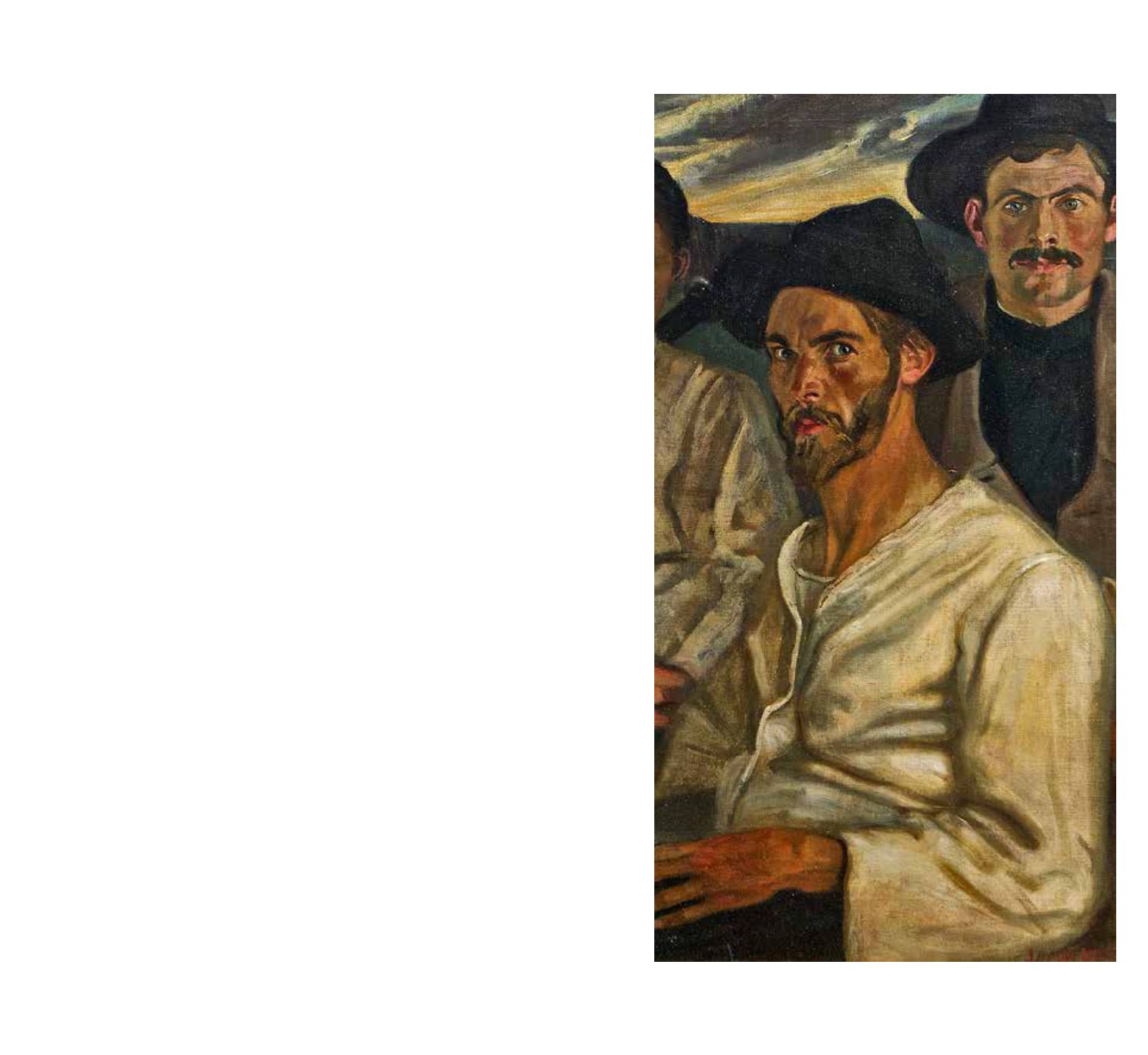
128
demonstrates Keating’s expertise as a painter of still life, landscape, sky scape, and
the detailed texture of clothing.
What of the porter to which the title of the painting also refers? It would appear
that necessity was the cause of invention, and porter, a type of beer, was served in any
type of vessel that came to hand.The glass is empty, but is there porter in that mug,
or does it contain a cup of tea? Keating was having a little fun with his title and
content. He continued to use such puns throughout his career, evident, for example,
in
Good Old Stuff
(1928), a painting that is also featured in this auction catalogue
(lot 86).
The artist typically signed his paintings using his surname in Irish or English, but
he wrote his full name on the bottom right of
Pipes and Porter
. This detail suggests
that the painting, which has not been seen in public for many years, may have been
a commission in 1915, although the identity of the likely patron is not known at
present.
© Dr Éimear O’Connor HRHA
Research Associate
TRIARC-Irish Art Research Centre
Trinity College Dublin
October 2013.
1
See Bruce Arnold, Orpen: Mirror to an Age, (London, 1981), pp. 307-380.
2
Collection: The Dublin City Gallery The Hugh Lane.
3
Keating is known to have painted two images featuring pipes.The first, Pléaráca in Arainn (A Gay Time
on Aran)(1913), won the Orpen Composition Award at the Dublin Metropolitan School of Art in 1913. It
would appear that this painting did not include a self-portrait of the artist. It was described some years later
as ‘a rather large painting…depicting an Aran piper in full “war paint”…playing lustily on his Píob Mor
(large pipes) for the delectation of several of his friends, who, to judge by the expression on their faces, are
thoroughly enjoying themselves’, John J. R. O’Beirne, ‘A Coming Irish Artist: The work of John Keating’ in
The Rosary, Vol. 21, 1917, pp. 571-577.
4
Information on the identity of the piper and the young boy would be gratefully received by the author on
5
The author would like to acknowl-
edge and thank Nicholas Carolan, Director of the Irish Traditional Music Archive, 73 Merrion Square, for
his help and advice with regard to the pipes illustrated in Pipes and Porter. See
6
The author would like to acknowledge and thank Emmett Gill, Administrator, and Terry Moylan, Ar-
chivist, Na Píobairí Uillean, 15 Henrietta Street, Dublin 1, for information pertaining to Thomas Ashe
and Éamonn Ceannt, and the political significance of the uilleann pipes and the war pipes in 20th century
Ireland. See
7
With thanks to Nicholas Carolan and Seán Donnelly. MacCulloughs opened premises in Dublin in the
1920s, and in 1926 the company published MacCullough’s Irish War Pipe Tutor and Tune Book, written
by Liam Mac Andreis (William Andrews), leader of a pipe band at Trinity College Dublin. See Adam
Sanderson on
8
Coincidentally, James Nowlan, a native of Kilkenny, served twenty years, from 1901 to 1921, as president of
the GAA. He was interned in England after the 1916 Easter Rising. Nowlan was a supporter of Sinn Fein
and an alderman of Kilkenny Corporation for many years. See
-
ry/gaa-presidents/


